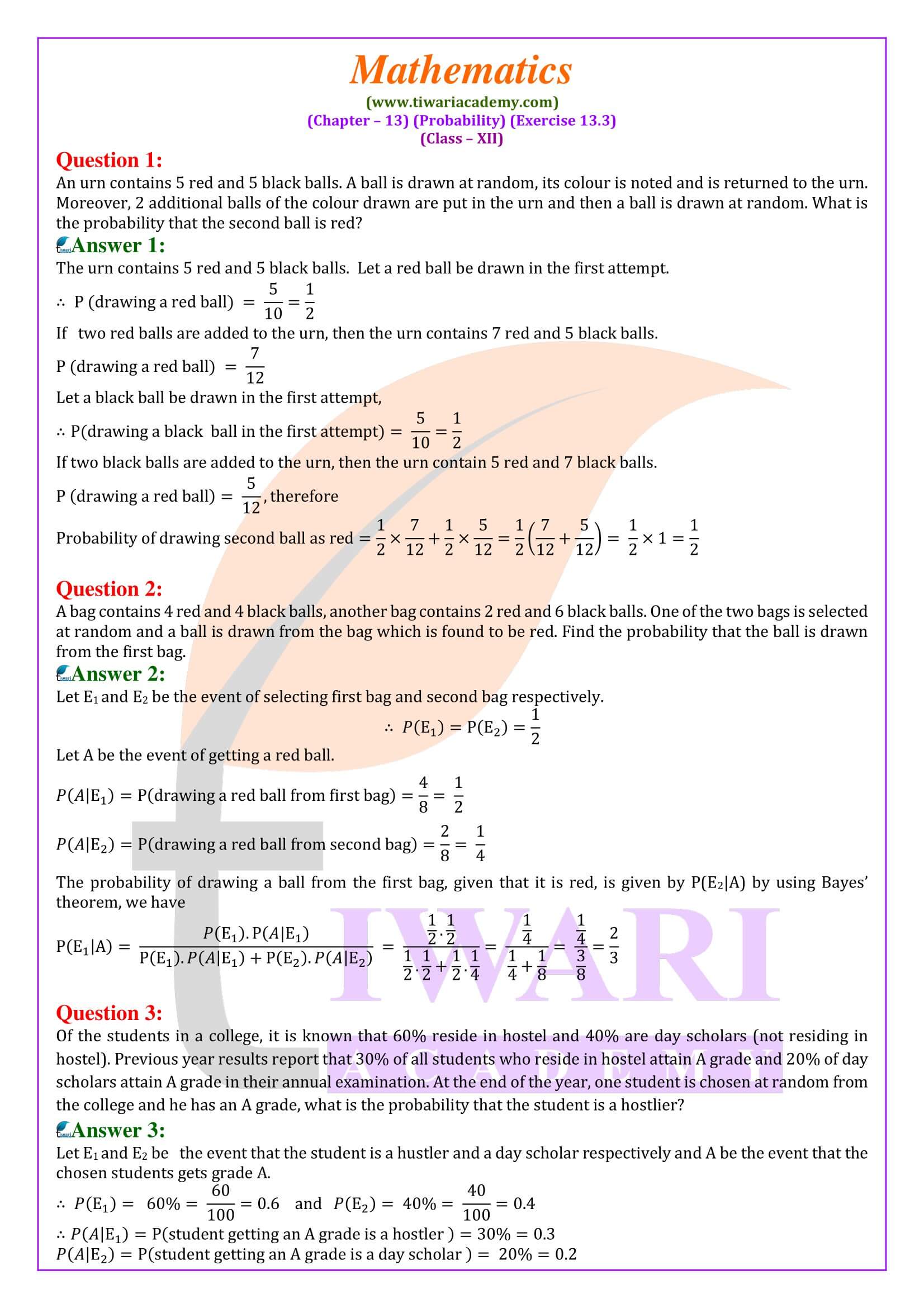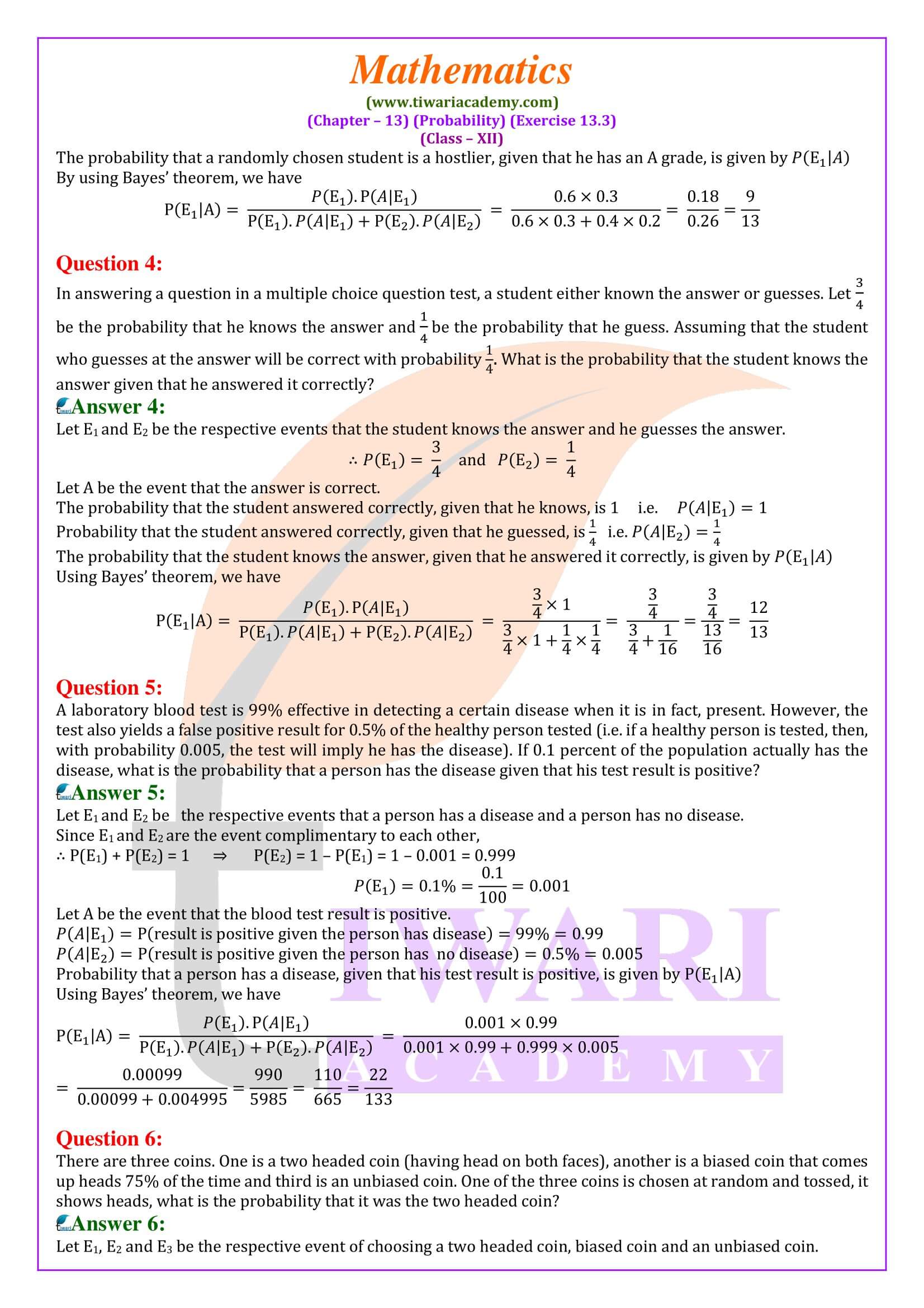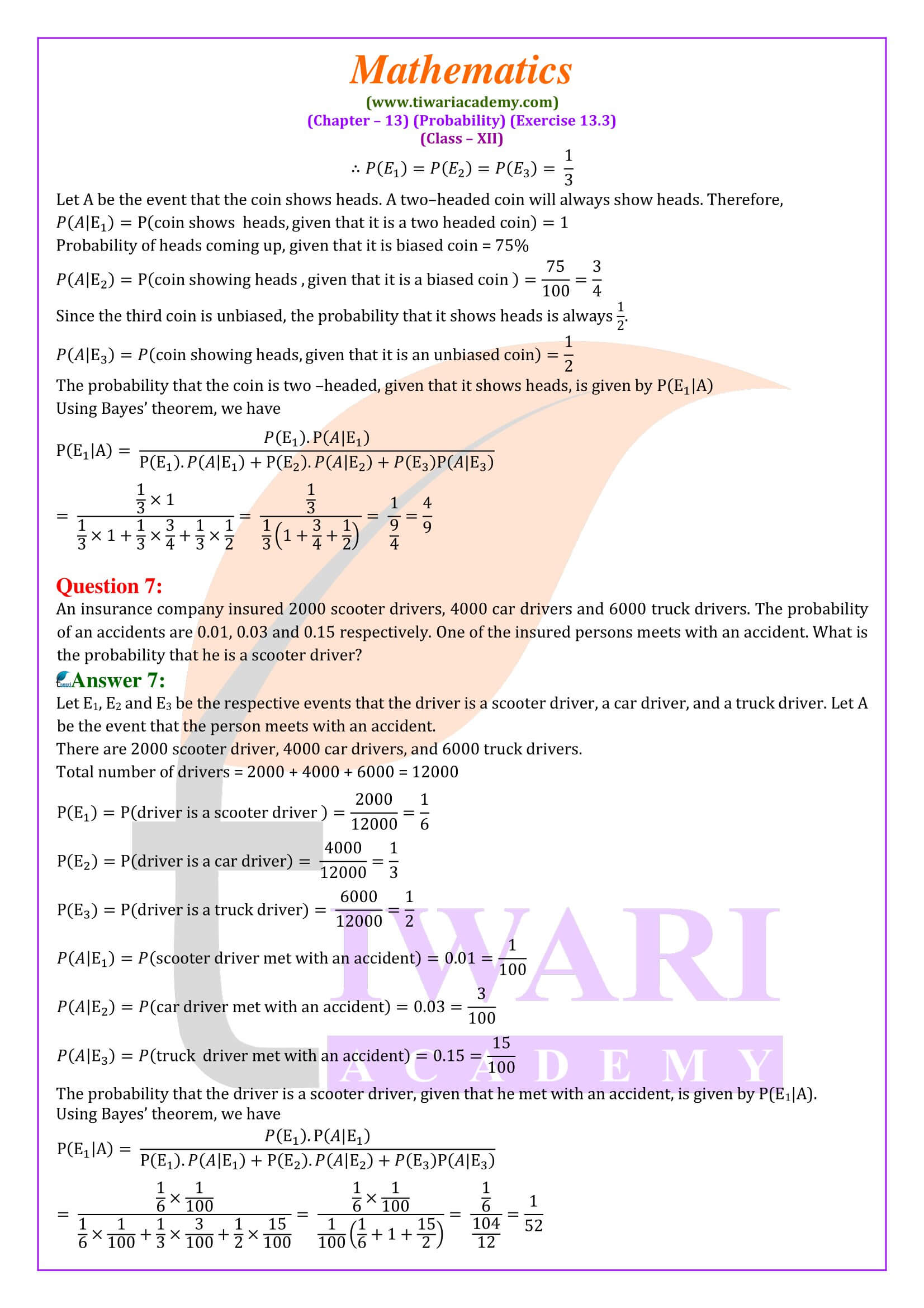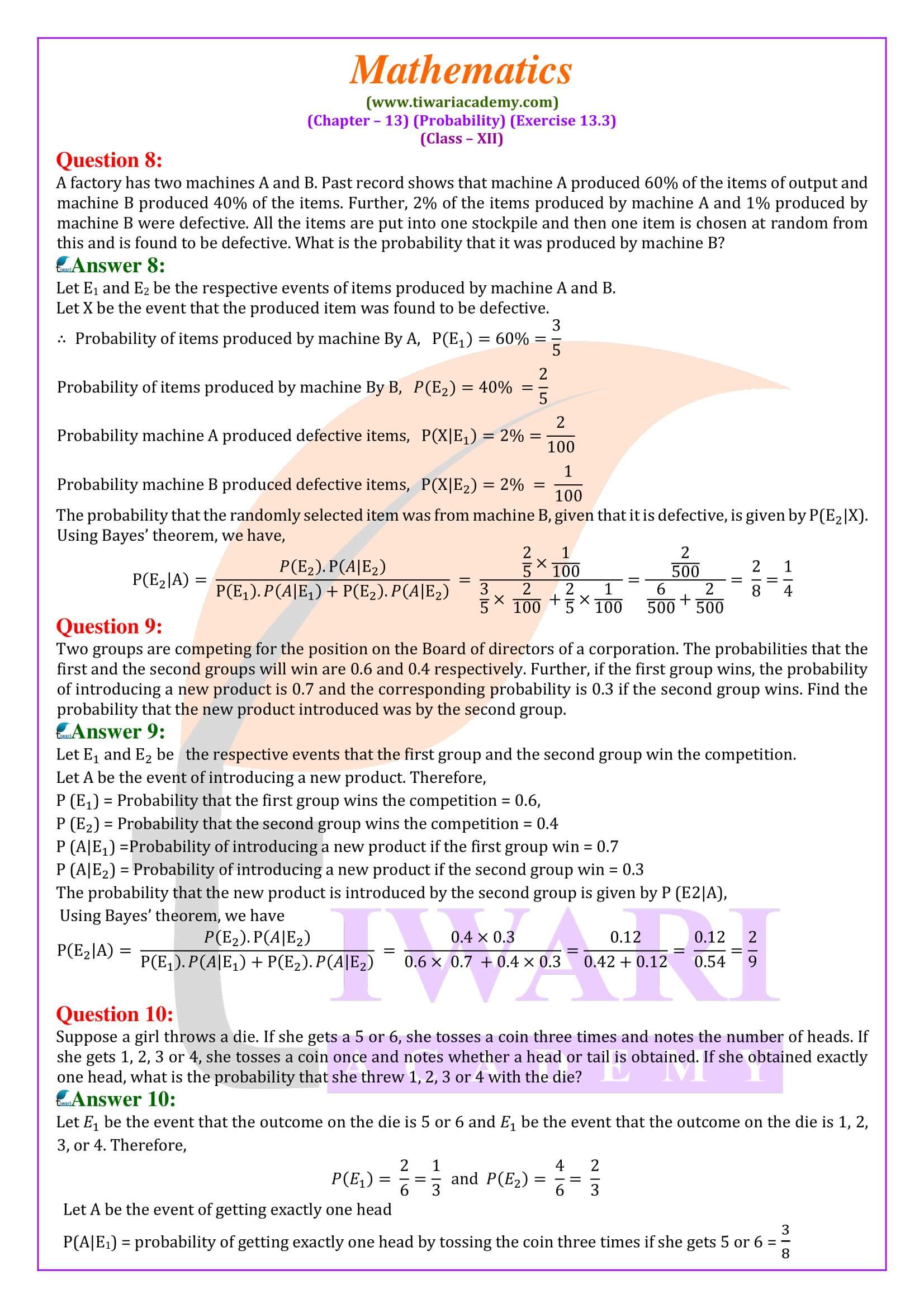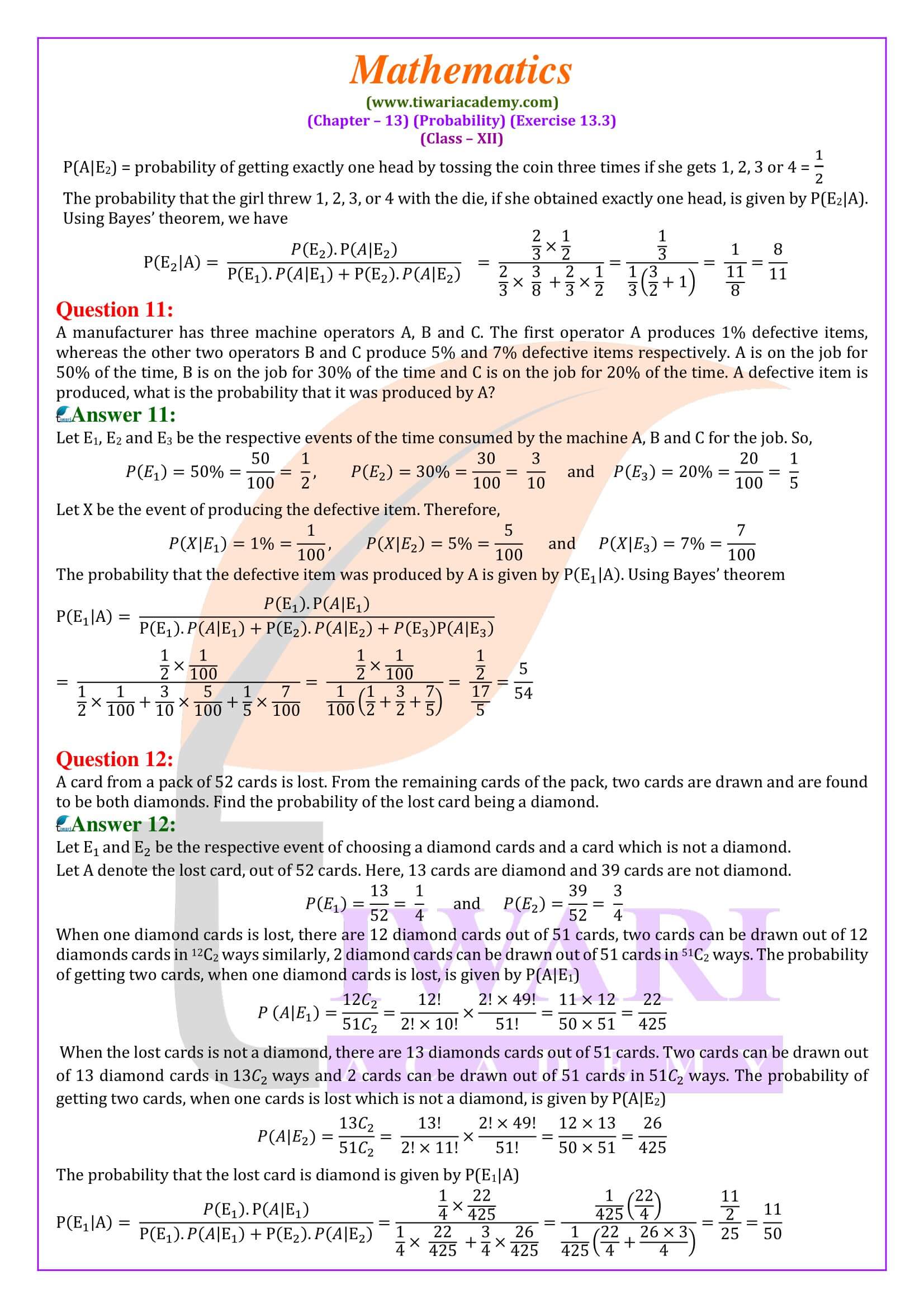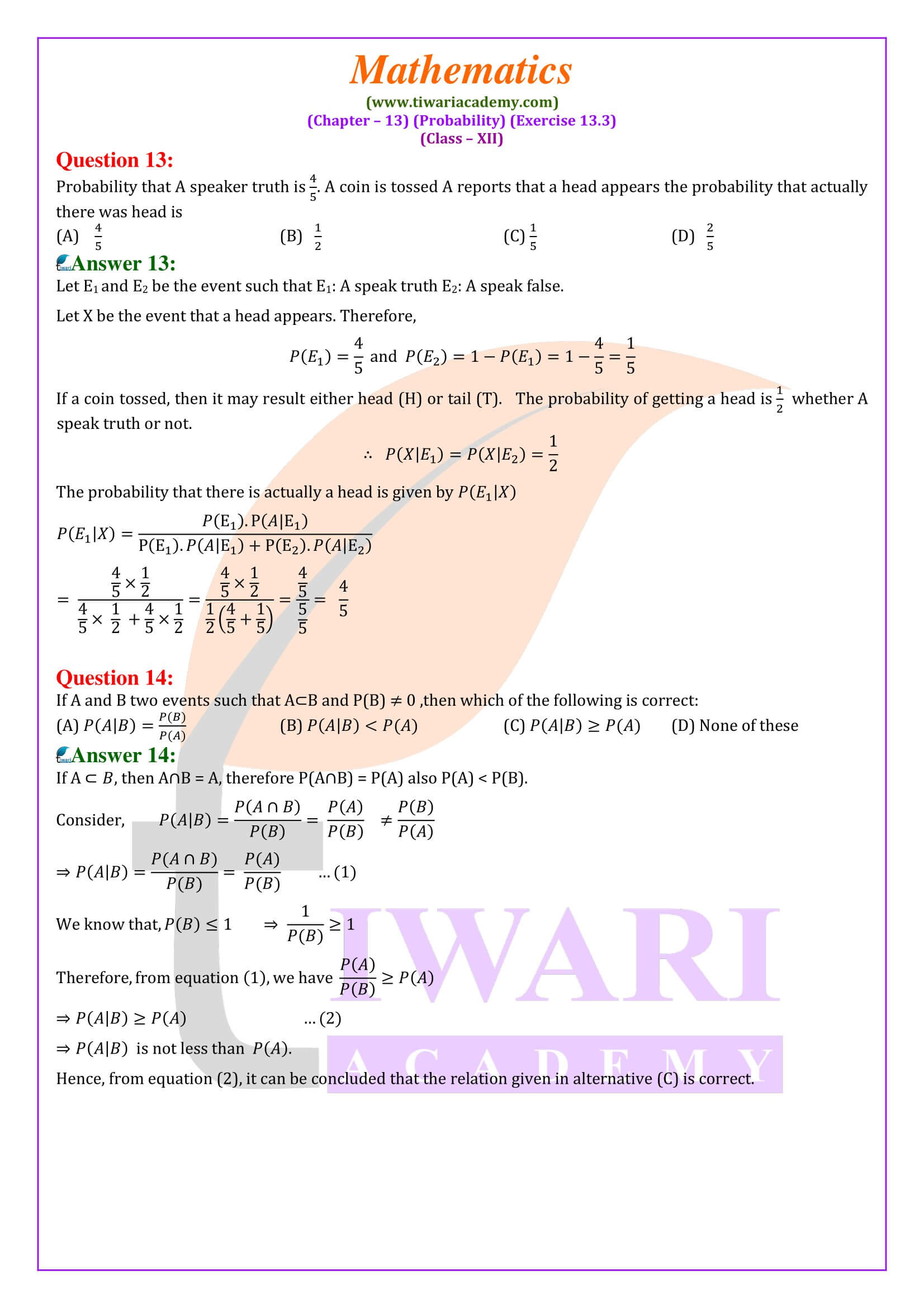NCERT Solutions for Class 12 Maths Chapter 13 Exercise 13.3 Probability in Hindi and English Medium for CBSE Session 2024-25. Question answers and solutions of ex. 13.3 Class 12 Maths are updated according to new NCERT books issued for CBSE Examination 2024-25.
Class 12 Maths Exercise 13.3 in Hindi and English Medium
| Class: 12 | Mathematics |
| Chapter: 13 | Exercise: 13.3 |
| Chapter Name: | Probability |
| Content Type: | Text and Online Videos |
| Session: | CBSE 2024-25 |
| Medium: | Hindi and English Medium |
Class 12 Maths Chapter 13 Exercise 13.3 Solutions
UP board, MP board and other state board students can use these solutions if they are using the latest NCERT Books for class 12 as course books. Video solutions of Exercise 13.3 is given here along with PDF solutions.
Class 12 Maths Chapter 13 Exercise 13.3 in Videos
About Class 12 Maths Chapter 13
In previous classes, we have studied probability as measuring the uncertainty of an event in a randomized experiment. We will discuss the formula of axiomatic approach formulated by Russian mathematician A. N. Kolmogorov (1903–1987) and treated probability as a function of the results of the experiment. We have established a similarity between axiomatic theory and classical probability theory in terms of equally likely outcomes. Based on this relationship, we derived the probabilities of events associated with discrete sample locations. We have also studied the probability rule. Download free apps for Class 12 Maths in English and Class 12 Ganit App in Hindi Medium for offline use without internet.
Multiplication Theorem on Probability
Explain that E and F are two events associated with a sample space S. Clearly, the set E∩F denotes the occurrence of both E and F. In other words, E∩F refers to the simultaneous occurrence of other events E and F. The event E∩F is also spelled EF. Very often in mathematics we need to find the probability of occurrence of EF. For example, in the experiment of drawing two cards one after the other, we may be interested in finding “king and queen” the probability of this event. The probability of occurrence of EF is obtained using conditional probability. We know that the conditional probability of event E given by F is represented by P (E | F).
What are Independent Events?
Consider the use of drawing a card from a deck of 52 cards, in which the initial events are treated equally. If events E and F denote that ‘the prepared card is a spade’ and ‘the prepared card is an ace’, respectively, then the occurrence of event F does not affect the probability of occurrence of event E and the occurrence of event E is not. Event F affects the probability of occurrence. Therefore, E and F are two events so that the probability of occurrence of one of them is not affected by the occurrence of the other. These events are called independent events.
